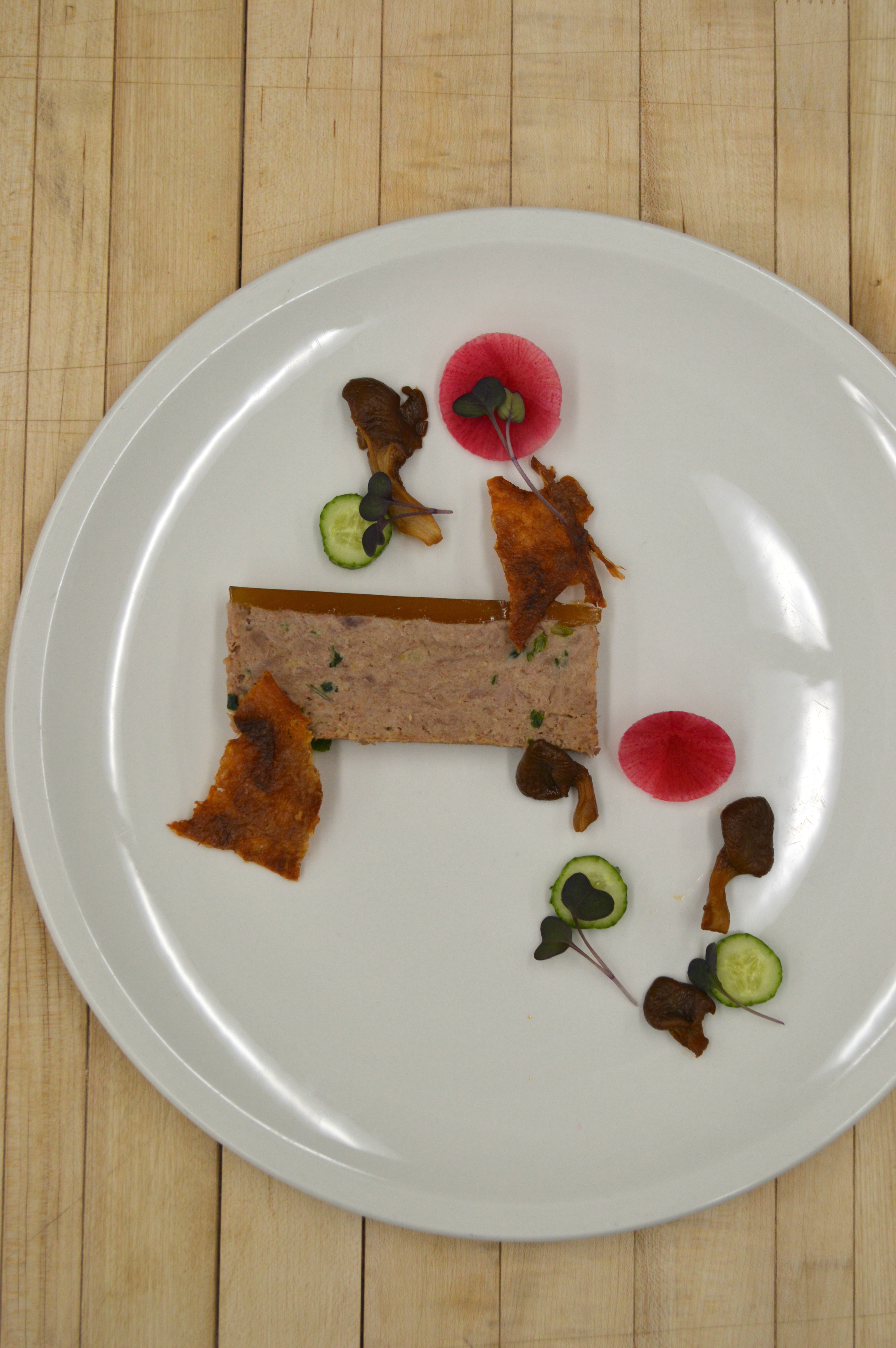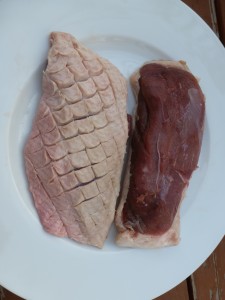
There are a few terrines and pâtés in the Eleven Madison Park cookbook that are capped with gelée. One that especially interested me is rabbit rillette topped with violet mustard gelée. I had only ever seen rillette topped with rendered lard, not a gelatin-rich liquid. Also I had only seen rillette presented in a ramekin, or perhaps shaped into quenelles, or spread on toast; I had never seen it treated more like a terrine, sliced into tidy rectangles. It’s a great example of the finesse that distinguishes these dishes from ones you would get in a bistro or brasserie. I set out to make my own version of terrine de rillette with gelée.
This past week we made a large … Continue reading.
